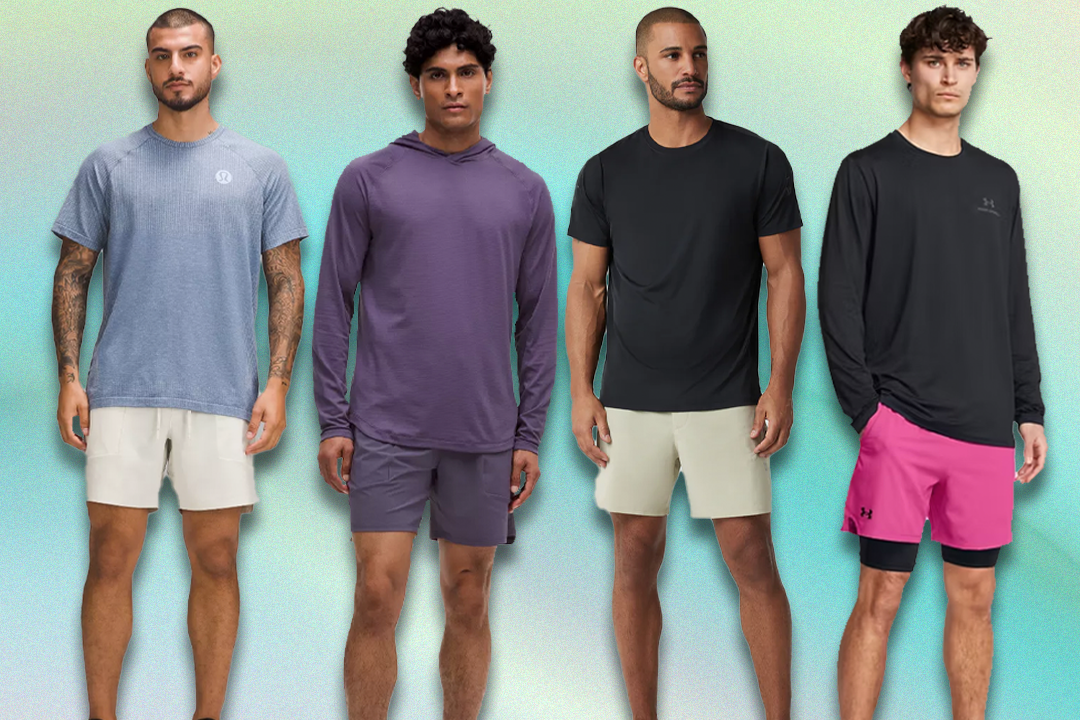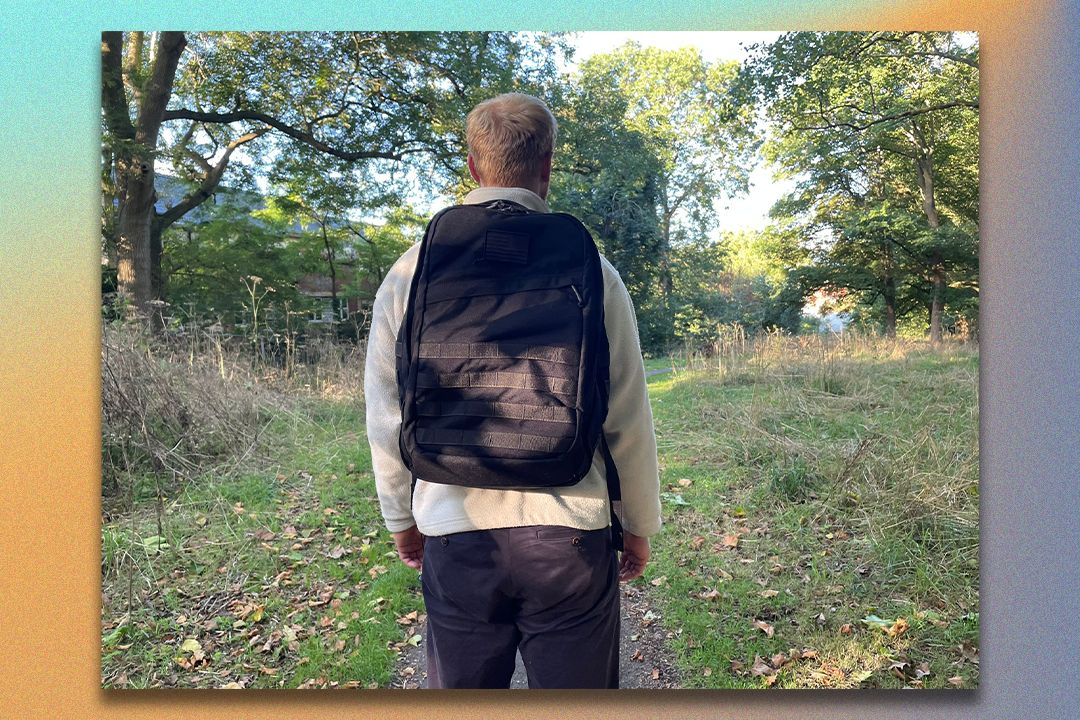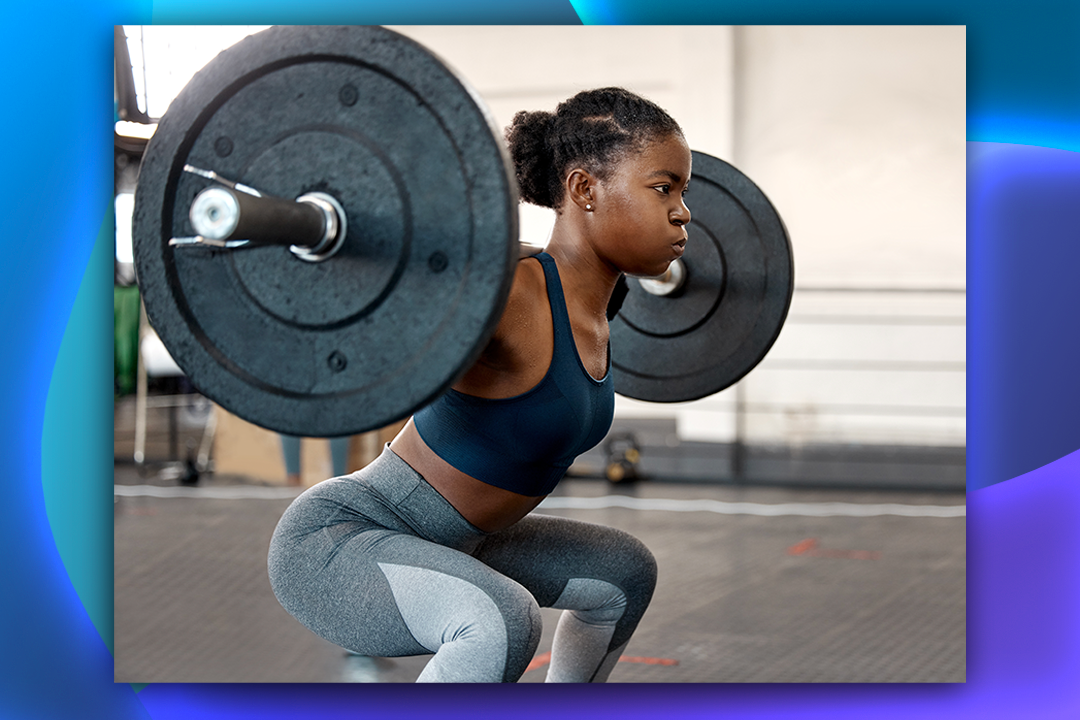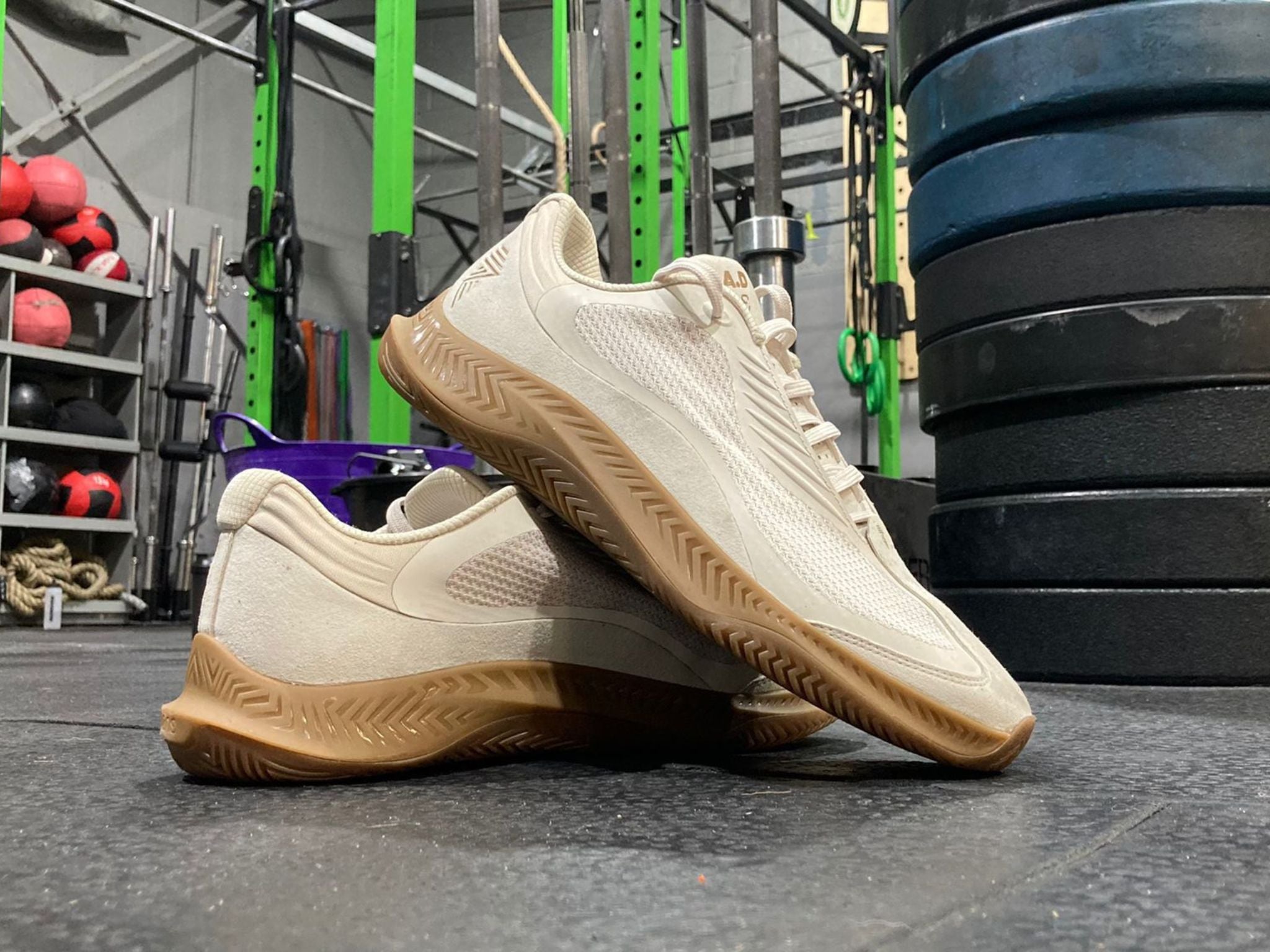
The Independent's journalism is supported by our readers. When you purchase through links on our site, we may earn commission.
These are the 12 best men’s gym trainers you can buy, according to our expert tester
Our top-rated footwear for lifting and HIIT workouts
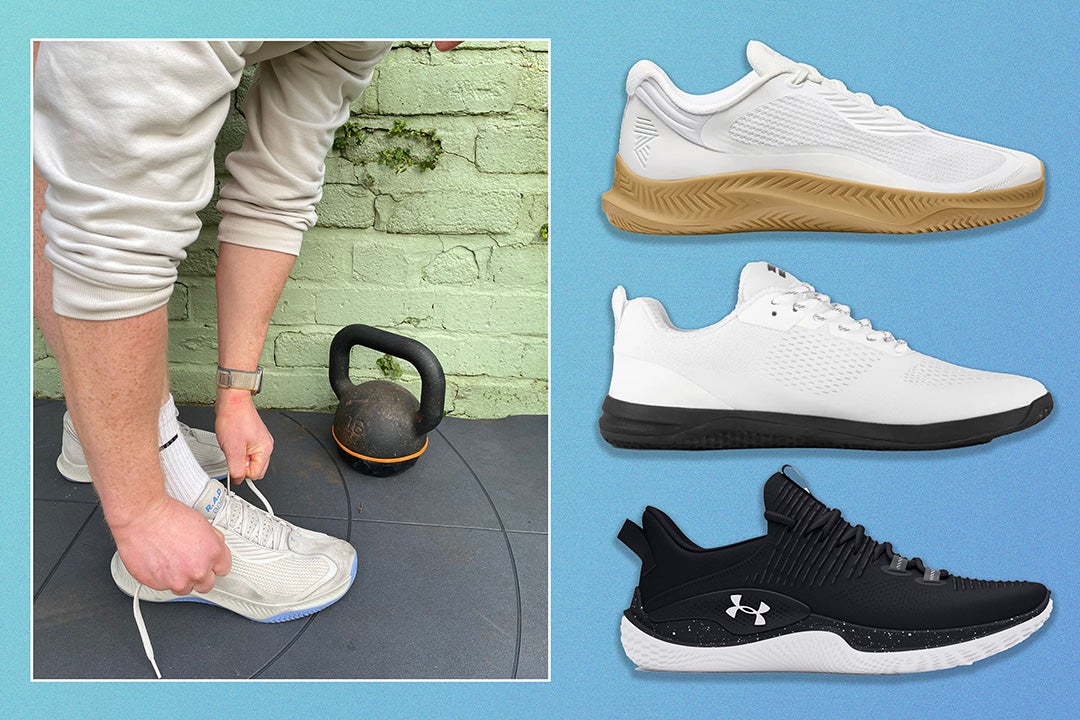
Investing in the best gym trainers for your chosen style of exercise won’t automatically grant you a huge squat PB or 20-minute 5K time. But it will improve your workouts immeasurably, keeping you comfortable, stable and supported whether you’re lifting weights, whipping through HIIT workouts or even hitting the treadmill.
That’s why it’s worth weighing up the pros and cons of each option before picking a pair to wear. And, as an avid gym-goer whose shoe rack is approaching “out of control” territory, I’m the perfect person to help you do just that.
Having tested more than 40 pairs of the best gym trainers on the market, I’ve selected my favourite options below to suit everyone – from lifters to hybrid athletes. I’ve also included details on the benefits and drawbacks I experienced with each pair so read on to find your perfect match.
How I tested the best gym trainers
As a fitness writer, the gym is my happy place, giving me plenty of opportunities to put the best gym trainers through their paces. Each week I plough through five two-hour gym sessions filled with strength training, Olympic weightlifting, gymnastics practice, CrossFit workouts, cardio and plyometrics. I’ll also do a couple of separate running sessions.
I’ve worn every shoe on this list for at least a full week of training, testing it for comfort, stability, durability, support and style, as well as any bonus features that boost its performance. Given no two pairs of feet are the same, I also outsourced testing to fellow coaches at my local CrossFit box for a second and third opinion.
The best gym trainers for 2025 are:
- Best overall – R.A.D One: £130, Rad-global.com
- Best for stability – TYR CXT-2: £101.50, Kitbox.co
- Best for lifting weights – Inov8 F-lite max: £120, Inov8.com
- Best for versatility – Reebok Nano X4: £63, Reebok.eu
- Best for exercise classes – Strike MVMNT haze trainer: £135, Kitbox.co
R.A.D one

- Best: Men’s gym trainer
- Best for : Gym, CrossFit, HIIT, lifting weights, exercise classes
- Fit: True to size
- Heel to toe drop: 6mm
- Why we love it
- Balance of cushioning and stability
- Out the box comfort and locked-in fit
- Stylish, especially for a gym trainer
- Take note
- Not as stable as rivals for heavy squats for Olympic lifting
A decade ago, people hunting for a gym trainer would likely look to three main brands: Nike, Adidas or Reebok. This is no longer the case, thanks to the rise of rival brands like R.A.D. The R.A.D One is the brand’s hero product; a training shoe which looks great, offers oodles of versatility and provides largely unmatched out-the-box comfort.
I found it excelled in more dynamic exercise settings such as HIIT and CrossFit workouts, with enough cushioning to support me through box jumps, burpees and short runs of up to 1km. But there isn’t so much foam underfoot that it lacks stability for lifting weights.
There are other slightly more stable shoes on this list, like the Inov8 f-lite max below, if your training has a strong weightlifting bias. But for pretty much any other gym-based activity I struggled to find fault with this shoe. It’s also one of the only workout shoes I’ve ever owned that I’ve also wanted to wear as an everyday trainer too – hats off to the R.A.D design team.
TYR cxt-2
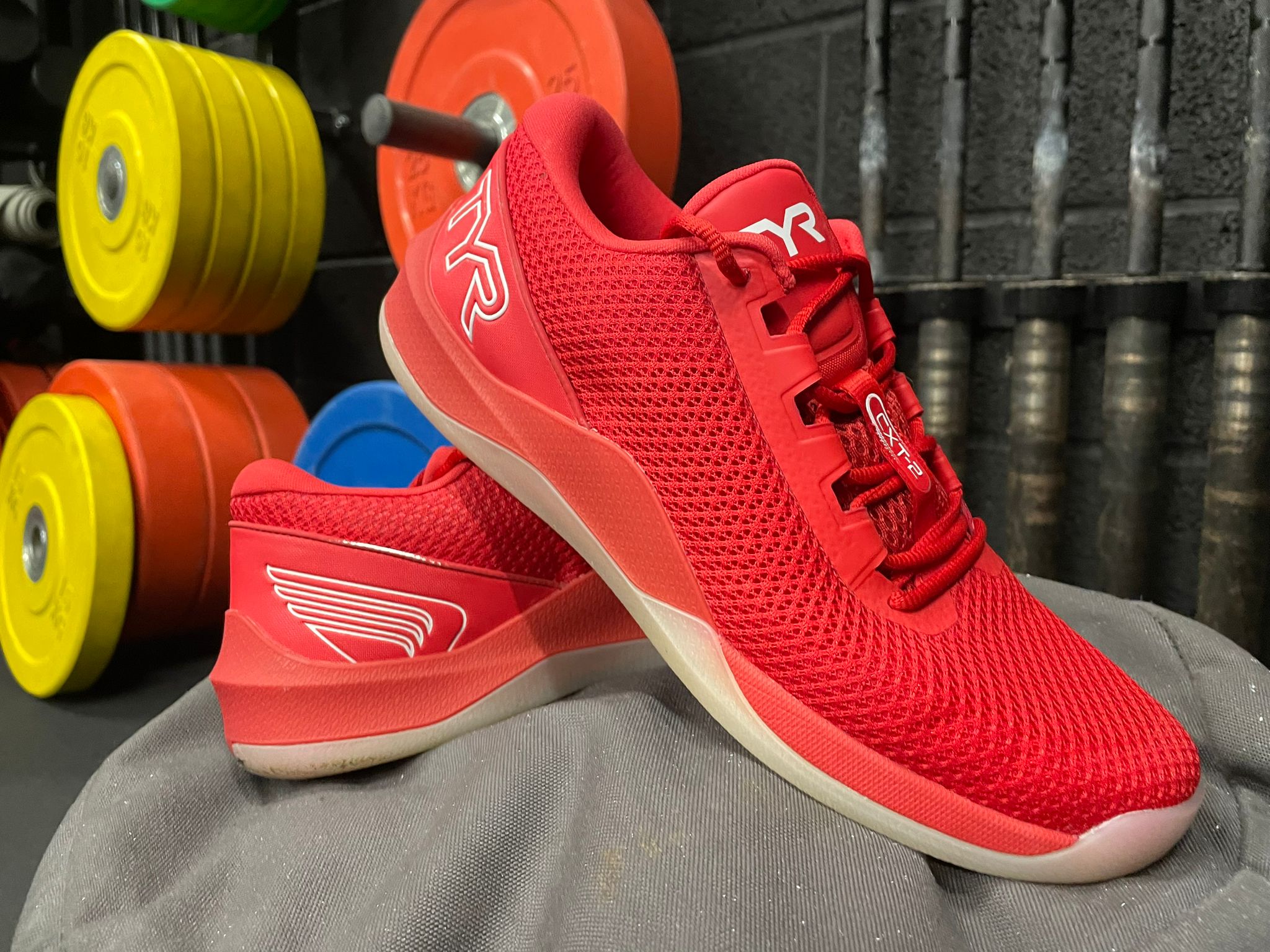
- Best: For stability
- Best for: Gym, CrossFit, Olympic weightlifting, HIIT, exercise classes
- Fit: Slightly small - if close to the sizing boundary, go half a size up
- Heel to toe drop: 7mm
- Why we love it
- Impressively stable for heavy leg exercises
- Robust build
- Responsive feel for dynamic exercises
- Take note
- Needs a few wears to break in
TYR and R.A.D isn’t exactly a rivalry as old as time, but it does date back to 2022 when both brands sprang onto the training shoe scene. The R.A.D One wins for me thanks to its style and comfort, but the TYR CXT-2 is still a tremendous shoe, winning on the durability and stability front.
It’s a great fit for anyone who loves leg days or varied CrossFit workouts, with a TPU stability wrap around the sides and heel providing strong foundations for squats and Olympic lifts.
But unlike other stable gym shoes I’ve tried like the Nike Metcon 9 and Inov8 f-lite g300, the TYR CXT-2 didn’t feel cumbersome. The high-density heel foam feels springy during plyometric exercises, without being so plush that it compresses under heavy loads.
Beyond this, the shoe felt bulletproof, showing no signs of wear and tear after weeks of regular use. It also fitted my slightly narrow feet incredibly well, so if you have wide feet I’d consider TYR’s wide version of the shoe.
Like the TYR cxt-1 before it, I did find the shoe felt a bit stiff and unyielding at first, particularly around the toe. But after a few wears the upper softened up and became far more accommodating.
Inov8 f-lite max
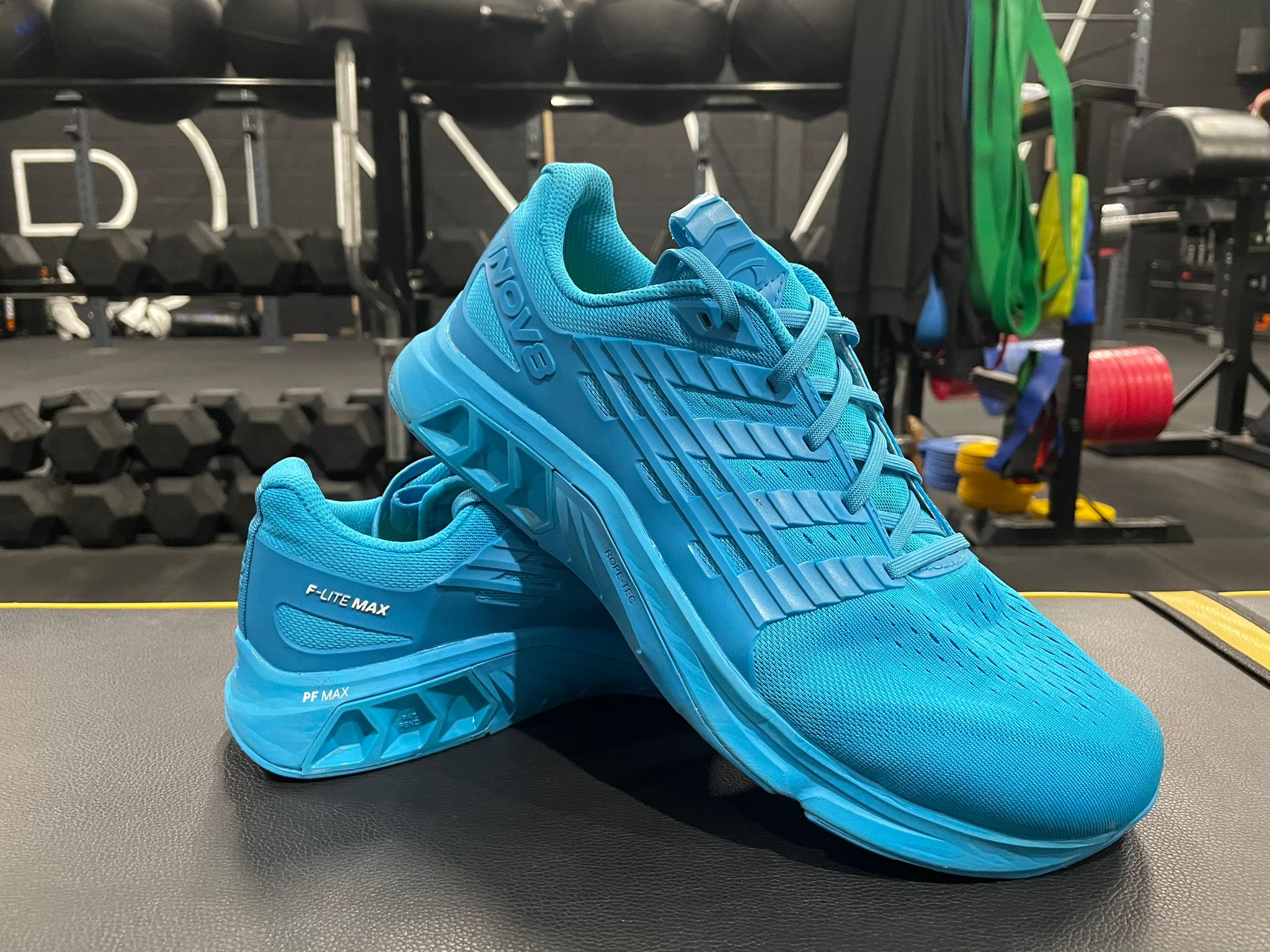
- Best: For lifting weights
- Best for: Lifting weights, Olympic weightlifting, gym, CrossFit
- Fit: True to size
- Heel to toe drop: 6mm
- Why we love it
- Incredibly stable
- Natural shape offers a snug. comfortable fit
- Great power generation during squats
- Take note
- Style won’t be to everyone’s taste
- Not suitabl for longer runs
Lake District-based Inov8 has been flying under the fitness world’s radar for too long, producing top training shoe after top training shoe, to the delight of its cult following. And I think this is the brand’s finest work to date.
I tested the shoe’s forerunner, the Inov8 f-lite g300, and while it was flawlessly stable for lifting heavy, the graphene outsole felt too stiff for any athletic pursuits and the rear of the shoe failed to lock my (admittedly narrow) heel in place securely. The f-lite max has an updated shape which narrows at the heel before widening around the forefoot, giving my toes enough room to splay for balance.
It’s safe to say, Inov8 nailed the redesign. The f-lite max mapped my foot perfectly to prevent any unwanted movement inside the shoe, but didn’t pinch or press uncomfortably in any area. The new outsole and TPU heel stabiliser create an incredibly stable platform for weighty leg exercises, and I loved how the shoe felt for squats of all forms. But it still felt nimble during more explosive movements like broad jumps.
In other words: there’s very little this gym trainer can’t do. I didn’t find it as friendly for running as the options above, but if you’re just looking to do short (up to 500m) intervals as part of a circuit or CrossFit workout, it will hold up just fine.
Reebok nano X4
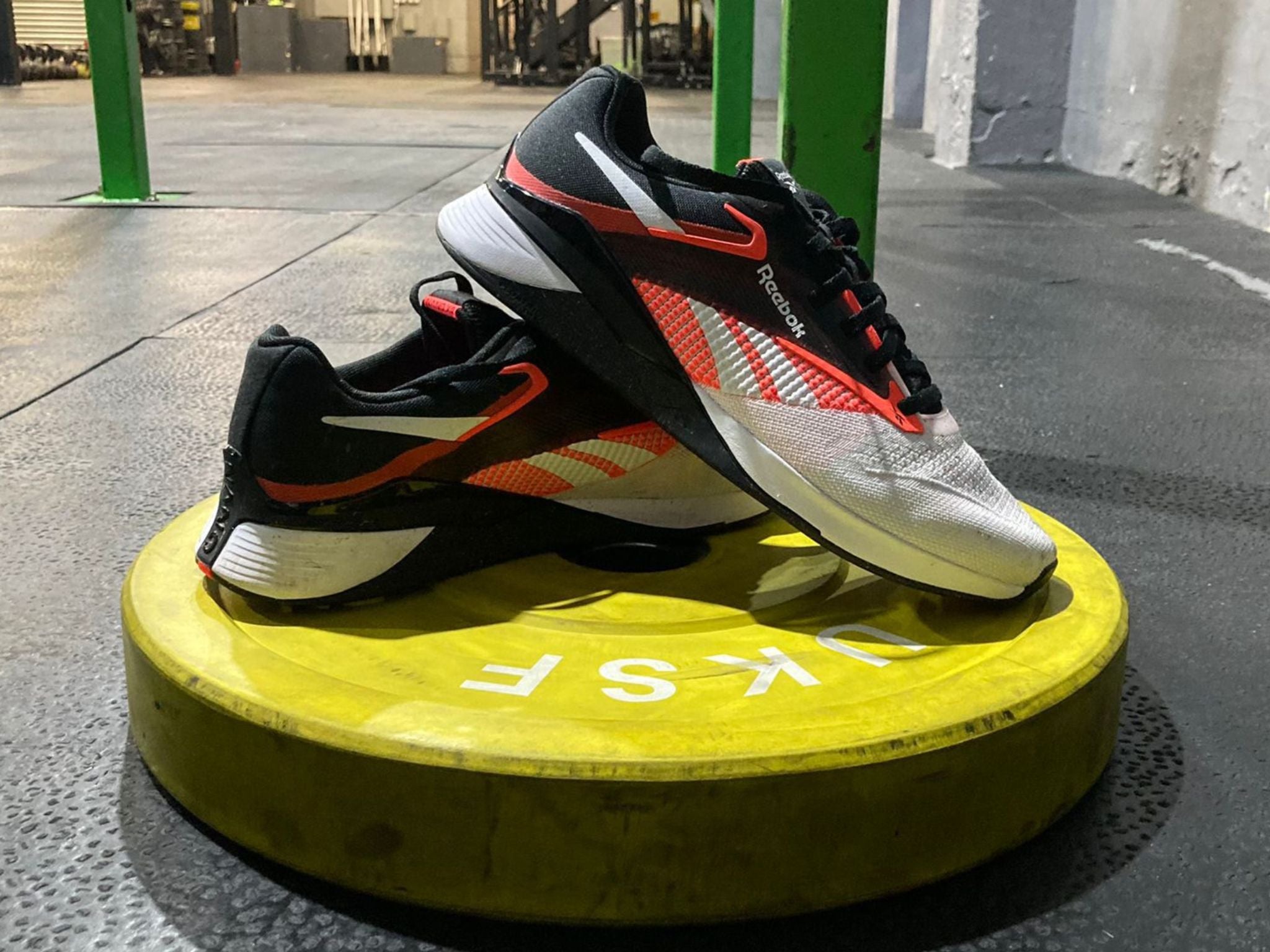
- Best: For versatility
- Best for: CrossFit, gym, HIIT, exercise classes, Olympic weightlifting
- Fit: True to size
- Heel to toe drop: 7mm
- Why we love it
- Versatile
- Out of the box comfort
- More cushioned than rivals for HIIT workouts
- Take note
- Feel larger on the feet than others
The Nano is Reebok’s signature training shoe. What started as a CrossFit-focussed endeavour has since broadened its target market to become the self-titled “official shoe of fitness”, but does it live up to the hype?
My Reebok nano collection dates back to 2016’s Nano 6, and the brand has released a mixed bag in that time. I didn’t get on with the X1 (2021) or X2 (2022), finding they felt more like tennis shoes than gym trainers, but noted a return to form with the versatile X3 (2023). This was thanks in part to a new “lift and run chassis” system – a dome in the heel which compresses under load to provide firm foundations for lifting, then expands during explosive exercises like running to offer extra bounce.
The nano x4 kept this innovative feature, and while I couldn’t actively feel the heel adapting while working out, it did feel solid for heavy leg exercises and responsive when I came to jumping and short runs.
The shoe also improves on other areas of the x3. I found the redesigned TPU heel clip offers more stability than its predecessor, and the full rubber outsole made it more durable – the exposed foam of my Nano X1 quickly ripped from running on textured roads. The only negative mark against its name is that the shoe is on the larger side, and feels a little bit clunky while you’re getting used to it.
Despite its versatility, I wouldn’t wear the nano x4 for runs longer than a couple of kilometres – you’ll want a dedicated running shoe for that, or at least the ON cloud x3 below. But this aside, there’s very little this malleable shoe can’t do.
Strike MVMNT haze training shoe
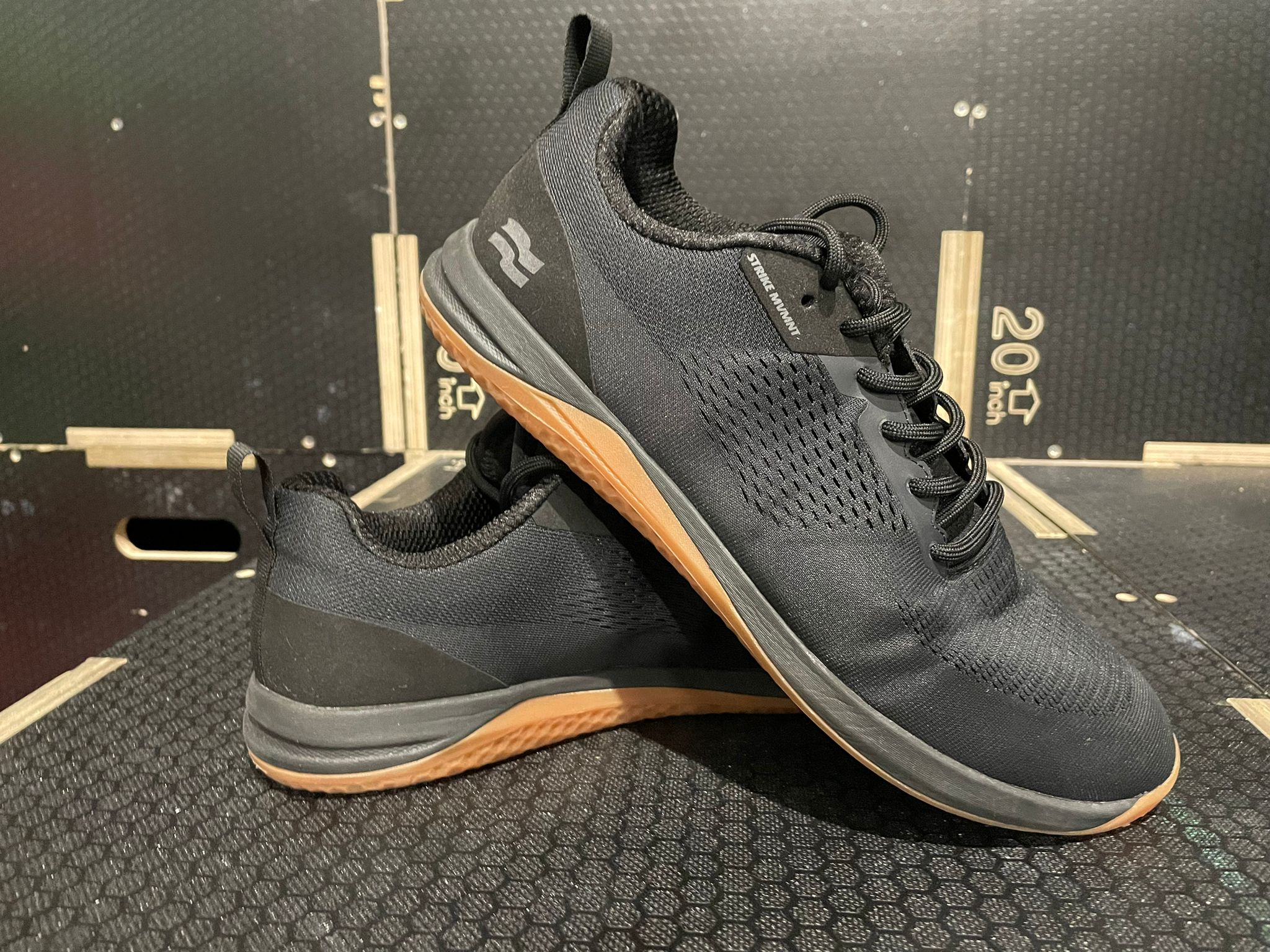
- Best: For exercise classes
- Best for: Gym, lifting weights, CrossFit, HIIT, exercise classes, Olympic weightlifting
- Fit: True to size, but quite thin
- Heel to toe drop: 4mm
- Why we love it
- Provides plenty of stability for lifting weights
- Secure fit provides a locked-in feel
- Incredibly responsive for dynamic and plyometric exercises
- Take note
- Uncomfortable with thicker socks
You might not have heard of this shoe, or even the brand that makes it, but I think it’s about time you became acquainted. Strike MVMNT has been subtly making moves in the gym space for the last few years, and its debut training shoe is a doozy, offering great ground feel thanks to its thin midsole and 4mm heel-to-toe drop.
In the gym, it performed brilliantly, with the firmness underfoot allowing me to generate plenty of power through the ground for athletic endeavours such as jumps and sprints. It was impressively stable during squats and Olympic lifts too, with the flatter sole providing an excellent base for heavy deadlifts.
Unlike most rivals, I found I had to play with the lacing to find a fit I liked. When I first put them on, the forefoot felt too tight and there was some friction on the top of my big toe. But after a quick adjustment and (insider tip) a switch to thinner socks, the shoe cradled my foot and felt supportive during lateral movements. Although, given I have narrower feet, I’d recommend those with wider feet try this shoe on before buying to make sure it’s a good fit.
Strike MVMNT also says you can happily tackle a 5K in this shoe. Personally, I’d like a little more cushioning if I’m going to cover that sort of distance, but this is just my preference.
It’s a top choice for any gym-based activity, whether you’re tackling a class or hoisting heavy weights around. It’s easy on the eye too, which always helps, and as a result it’s already made its way into my regular gym trainer rotation.
Inov8 f-fly
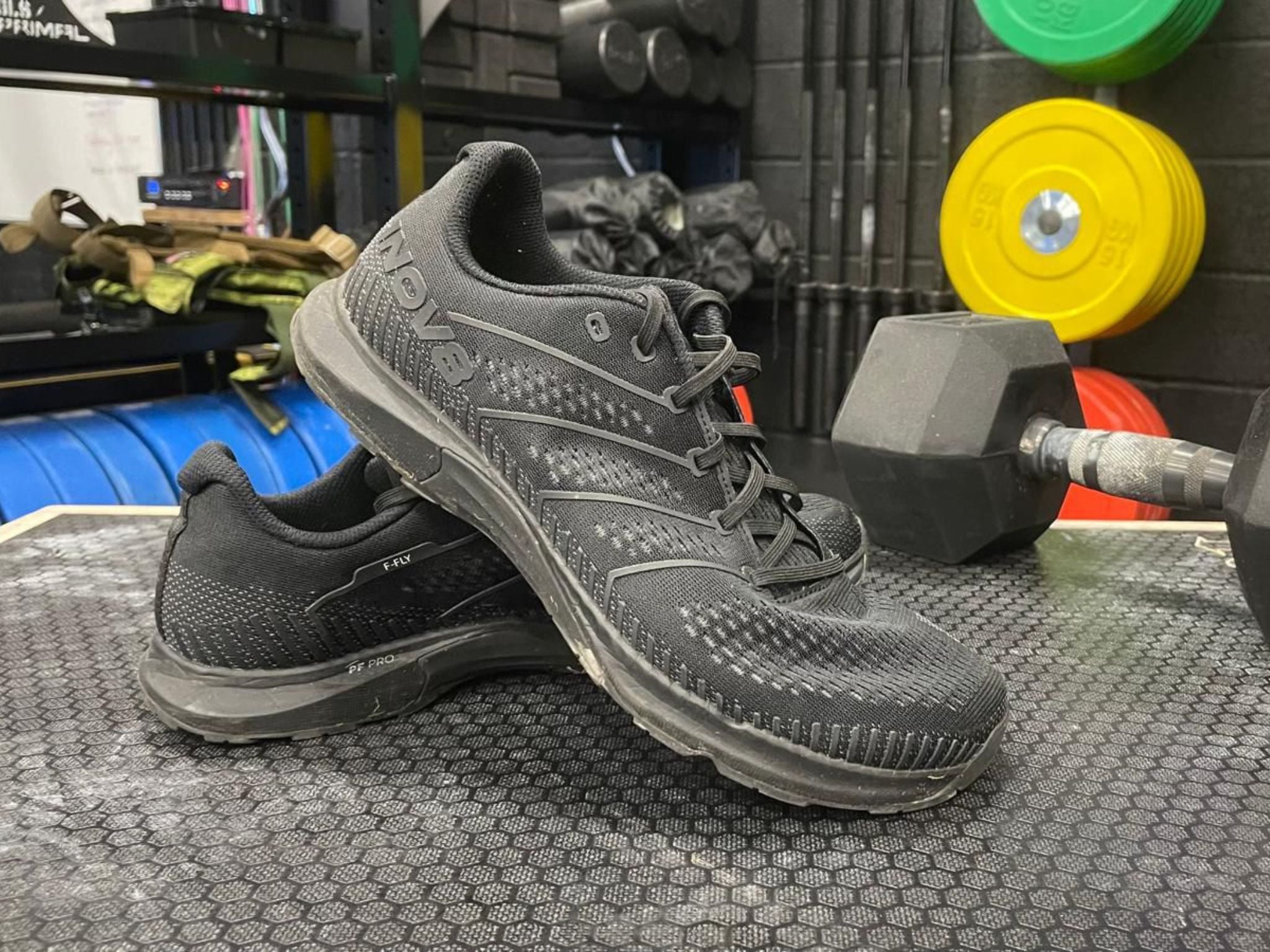
- Best: For Hyrox
- Best for: Hyrox, short-middle distance runs, gym, exercise classes, HIIT
- Fit: Slightly small, go half a size up
- Heel to toe drop: 4mm
- Why we love it
- Handles mid-distance runs and lifting weights
- Natural shape provides a comfortable, secure fit
- Great for hybrid training
- Take note
- Some compression in the heel under heavier weights
- Not as stable as competitors
Finding a good Hyrox shoe is easier said than done. It needs to carry you through 8km of running in comfort, while also being grippy enough to push a sled and stable enough for leg-dominant exercises like lunges and wall balls. To solve this problem for my inaugural Hyrox race, I turned to the Inov8 f-fly, and it was excellent.
Its jack of all trades status comes courtesy of a lively powerflow pro midsole, which provides an impressive amount of cushioning considering its low stack height under the heel. But because this foam layer is thin and fairly firm, it doesn’t feel like you’re standing on two marshmallows when holding a moderate weight – something you’ll encounter if you do a dumbbell lunge in running shoes.
The shoe is incredibly lightweight too (a UK size 10 comes in at just 248g, by my scales) and benefits from Inov8’s updated shoe shape, providing plenty of room around the toes so I could spread them for balance, then narrowing to lock my heel securely in place.
The Inov8 f-fly isn’t as good as the shoes above for lifting heavy weights, and I did notice some compression in the heel when squatting weights of 100kg and up. But this is a trade-off for its running credentials, which will handle a treadmill session or outdoor jaunt up to 10km with ease.
So if you’re after a Hyrox shoe, or you’re a self-professed Hyrox athlete that wants to run and lift in the same session, this shoe should be at the top of your wishlist.
Inov8 bare-xf
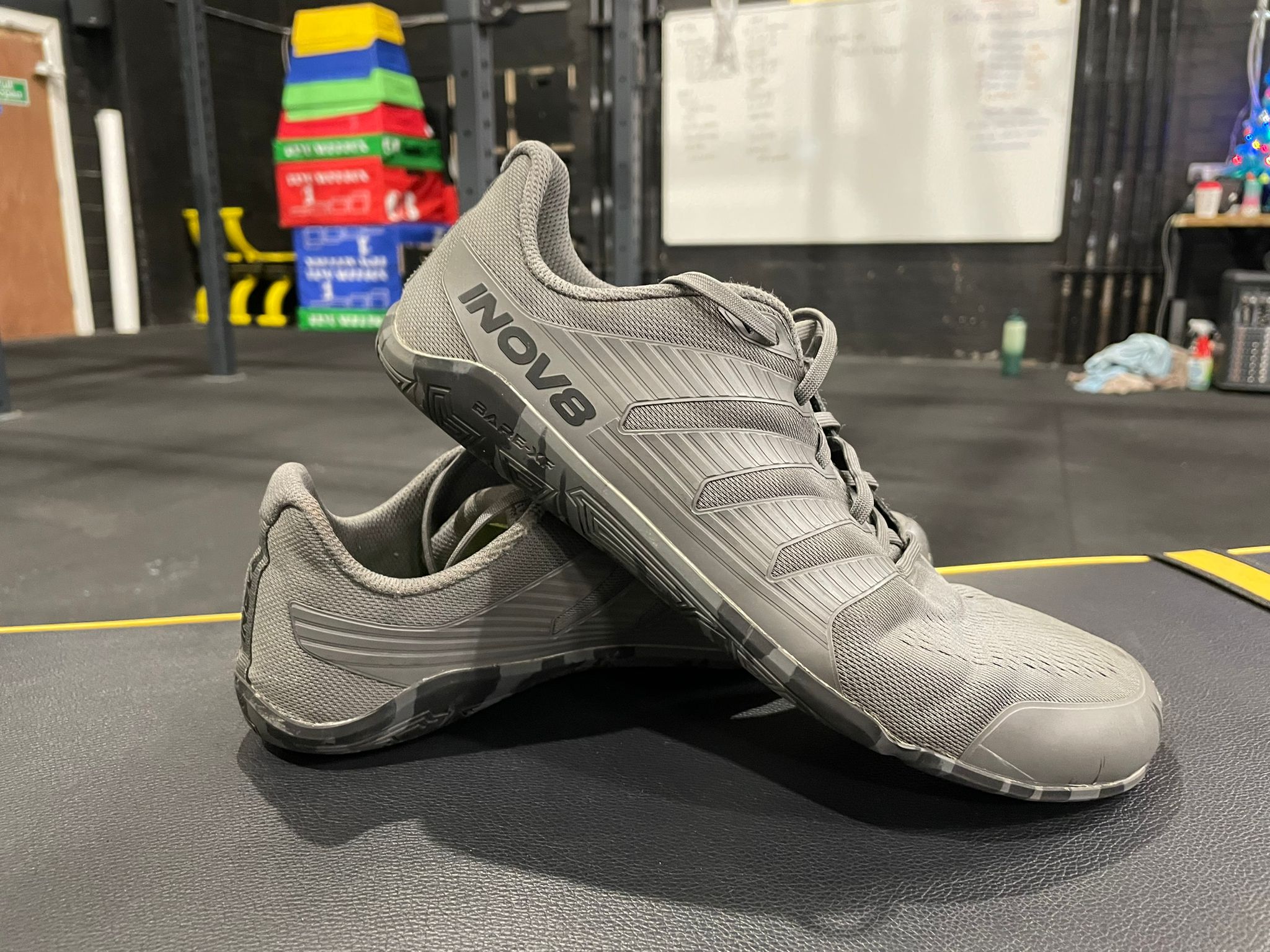
- Best: Barefoot gym trainer
- Best for : Gym, CrossFit, lifting weights, HIIT, exercise classes
- Fit: True to size
- Heel to toe drop: 0mm
- Why we love it
- Incredibly comfortable
- Lightweight
- Some support from springy ‘boomerang’ footbed
- Take note
- Din’t feel as durable as others I tried
Vivobarefoot is the go-to barefoot shoe for most people. But having tried a pair of the brand’s strength training offering, the motus strength, I actually found I preferred wearing the Inov8 bare-xf for my workouts.
Putting them on for the first time felt more like slipping into a sock than a shoe, with the malleable mesh upper and razor-thin outsole giving a true barefoot feel. But, thanks to the “boomerang” footbed (made from hundreds of small foam beads, promising to improve energy return with each step) the shoe still has a little bit of spring to it, which I liked.
The shape of the shoe was true to my foot, widening around the toes and tapering at the heel. This meant there was no unwanted slipping within the shoe, but my foot was still able to move naturally. The lightly grooved grip on the outsole never let me down in a gym environment either.
As with any barefoot shoe, it’s unwise to buy a pair then launch straight into a no holds barred training session. You’re better off introducing it slowly, allowing your body and muscles to adjust to the different feel and lack of support. Personally, I also prefer a more cushioned shoe for running in any form.
However, if you’re after a barefoot gym trainer or CrossFit shoe for lifting weights and WODs, this is my pick of the bunch.
Under Armour tribase reign 6

- Best: For squats
- Best for: Gym, lifting weights, CrossFit
- Fit: True to size
- Heel to toe drop: 2mm
- Why we love it
- Excellent stability for squats
- Minimalist feel
- More affordable than competitors
- Take note
- Heavy
- Not the best looking
I strongly disliked the Under Armour tribase reign 5. The shoe was too vanilla for my liking, playing it safe and scoring sixes across the board for stability, comfort and style. Luckily, Under Armour has since decided to completely overhaul its flagship training shoe, and it’s done a very good job.
The tribase reign 6 has more of a minimalist feel, with a thin outsole offering great ground feel. In action, this helped me feel more balanced, stable and able to generate force through the floor effectively. It also features the brand’s updated tribase tech, promoting three points of ground contact to offer improved stability. I can’t say this was at the forefront of my mind while dropping under a heavy clean, but I did feel secure in the catch position.
With its minimalist approach and 2mm heel-to-toe drop, the shoe’s cushioning comes from its insole, which is thicker and denser at the heel to provide springiness without too much compression under heavy weights. As a result, leg workouts felt great, and top-end squat sessions became my favourite use for the shoe.
The tribase reign 6 feels robust, with added durability features such as a rubber outsole that wraps around the midfoot, and you can usually pick a pair up in a sale for a very competitive price when compared to rivals.
My gripes lie in the overall look of the shoe (perhaps this is subjective and too superficial, but if I’m wearing it every day I want it to look good) and the weight – my UK10 shoe weighed 401g. This latter point didn’t matter while lifting weights, but when I went to do anything faster-paced the shoe didn’t feel quite as sprightly as rivals.
ON cloud x3
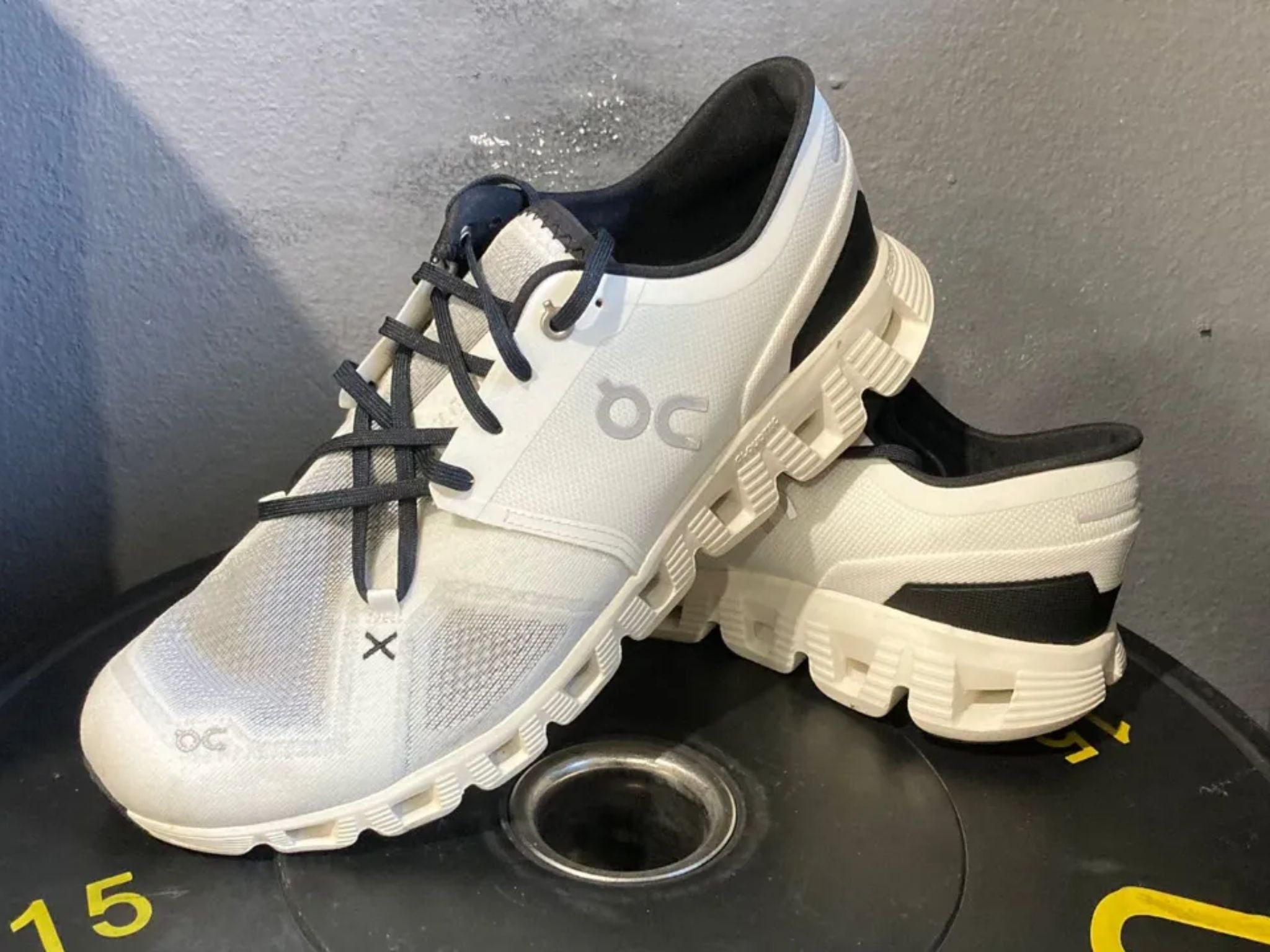
- Best: For lifting weights and running
- Best for: Gym, short-middle distance runs, exercise classes, HIIT, walking
- Fit: True to size
- Heel to toe drop: 8mm
- Why we love it
- Great for fast runs of up to 10km
- Cushioned and more stable than most running shoes for exercise classes
- Stylish
- Take note
- Heel compresses under heavier weights during leg exercises
- ot as stable as most shoes on this list for lifting weights
I see a lot of people wearing ON shoes in the gym, with the massive midsole stacks made with the brand’s signature honeycomb foam arrangement, or “cloudtec” technology. From a sartorial standpoint, they’ve made a great choice; from a squatting standpoint, not so much. The foam compresses under even lighter weights, offering minimal stability and making it that much harder to generate power.
The cloud X3 was made to solve this – the cloudtec midsole remains, but the shoe has been given a flared heel and firmer feel to make it stable enough for “multiple workouts”. The result is much more versatile than your average running trainer, but not quite an all-rounder.
The shoe still feels great for running. It’s incredibly lightweight, and while you shouldn’t expect the same plush cushioning as your average ON shoe, I really enjoyed its responsive ride for faster 5Ks and interval sessions. Its lightweight build and springy feel also paired well with dynamic movements such as sprints and jumps, so if exercise classes are your bag, I think it’s a strong choice.
It was only when I came to lifting weights that I found its shortcomings. It’s not going to matter if you’re in the gym for a spot of upper-body bodybuilding, but the shoe couldn’t compete with the rest of my list for free weight lower body exercises like b-stance deadlifts and barbell squats.
Because of the slight sponginess of the midsole and the lightly curved bottom of the shoe, I don’t think this shoe will be taken to heart by those who love lifting heavy, as they’ll want more stability. But if you like a diverse exercise routine with a running bias (did someone say hybrid athlete?), there are few better shoes out there.
I’ll soon be testing the latest training shoe release from the brand – the ON cloud x4 – so will be updating this guide with my verdict.
Under Armour dynamic intelliknit training shoe
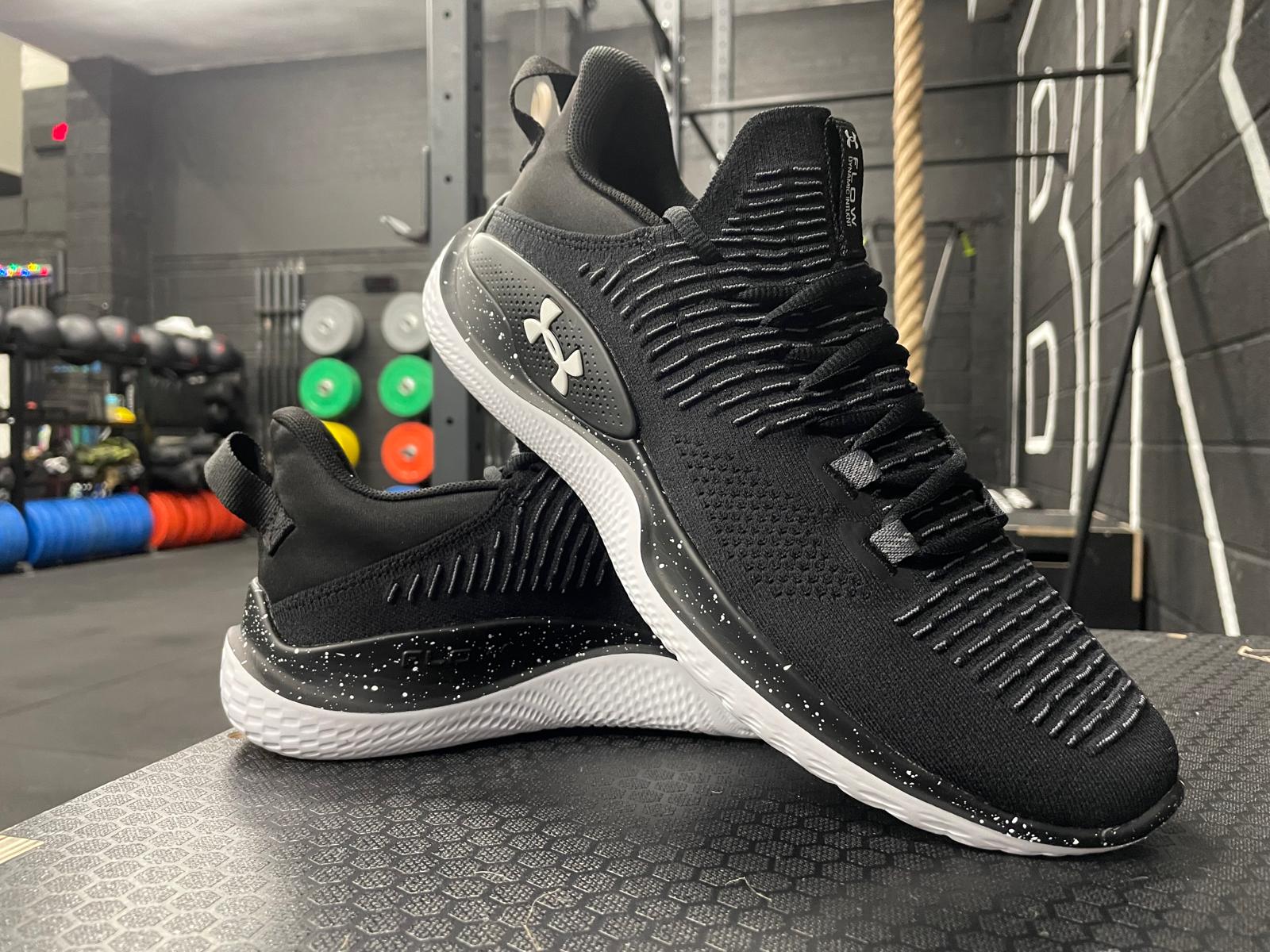
- Best: For comfort
- Best for: Gym, HIIT, exercise classes
- Fit: True to size
- Heel to toe drop : 8mm
- Why we love it
- Very comfortable and easy to get along with
- Versatile, proving good for mid-distance runs and lifting weights
- Take note
- Not as stable as other cross training shoe
- Narrower toe box
The Under Armour dynamic intelliknit training shoe is a bit different to most shoes on this list. It’s less geared towards the functional fitness crowd, instead catering more towards general gym-goers who want a do-all shoe that looks good and feels great. Happily, it nails the brief.
My favourite thing about the shoe is how easy it is to get along with. It’s incredibly comfortable from first wear, with the lively foam midsole offering plenty of bounce for HIIT workouts, exercise classes and whatever other high heart rate activities you might want to tackle. The accommodating intelliknit upper boosts its comfort credentials further, and it had better support for lateral movements like skaters than its predecessor, the Under Armour flow dynamic.
What this shoe isn’t, in my eyes, is a specialist. If you want a shoe for lifting weights, you’d be better served buying one of the options above or a dedicated weightlifting shoe. The higher foam stack under the heel of this shoe does compress during heavier leg exercises, and I would have liked a little more room around the forefoot to splay my toes for stability.
Likewise, if you want a shoe for running, a running shoe should be your first port of call. The Under Armour dynamic intelliknit training shoe felt fantastic for short sprints and intervals, but I would look to a purpose-built shoe for anything above 3km.
All that said, there’s still a very wide potential audience who will love this shoe. If you follow a varied exercise routine, place a lot of stock in the comfort of your footwear and want a shoe that covers most bases in the gym, I think the dynamic intelliknit could be a perfect fit for you.
GoRuck ballistic trainer
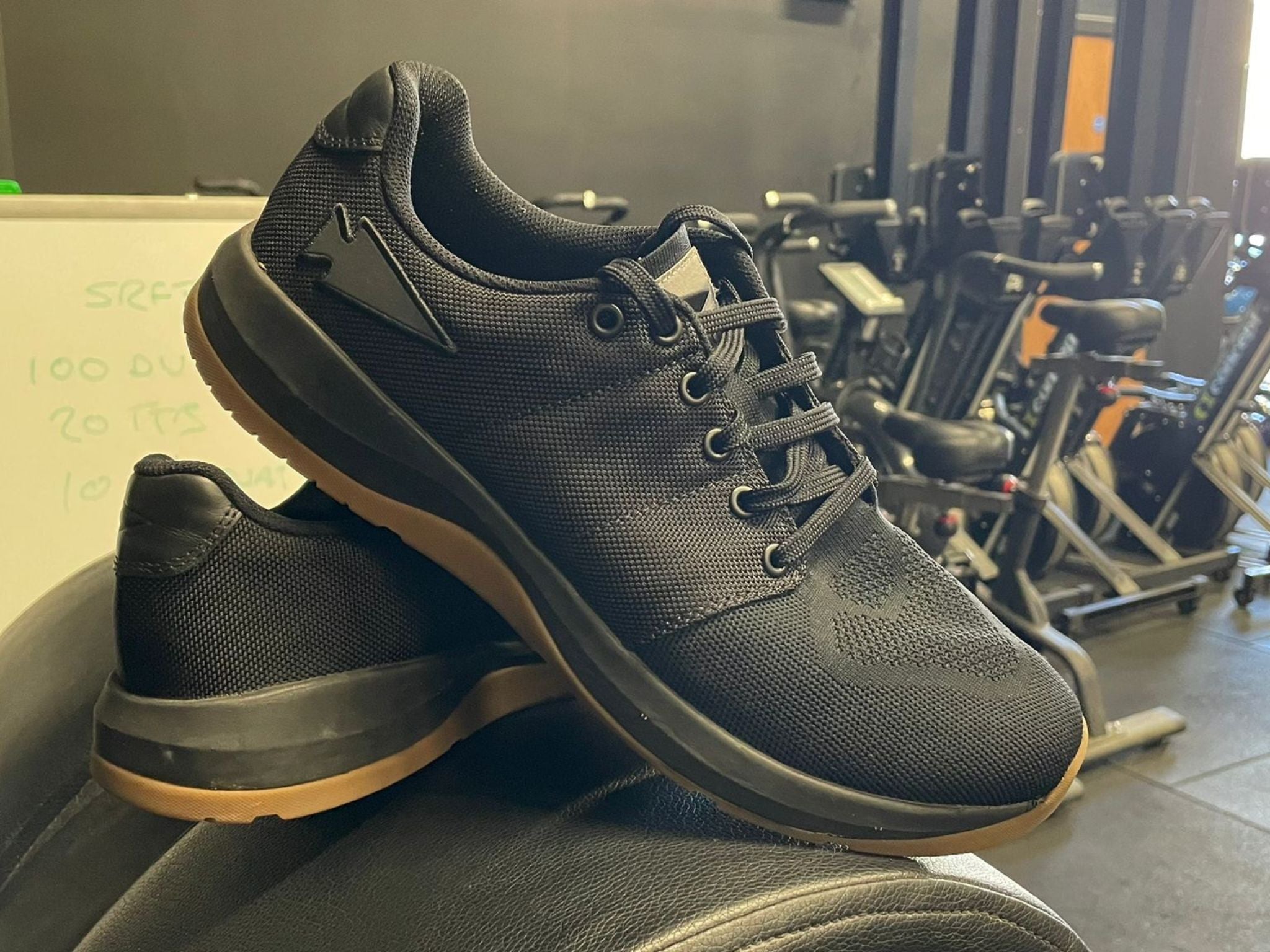
- Best: For durability
- Best for: Gym, rucking, CrossFit, exercise classes, HIIT, lifting weights
- Fit: True to size
- Heel to toe drop: 8mm
- Why we love it
- Indestructible
- Very stable
- Firm sole is suitable for rucking
- Take note
- Not the prettiest shoe
- Not much cushioning
The GoRuck ballistic trainer deserves more love than it’s given. I think it’s often overlooked because it’s not the prettiest of gym trainers, but it is one of the best, and it’s almost certainly the most durable.
After wearing the ballistic trainer for a few weeks, it still looked box fresh, and I hadn’t exactly gone easy on it. I’d worn it for my usual training regime, including well-known shoe-killing exercises like rope climbs and wall walks, as well as a spot of off-road rucking (as this is what the brand is best-known for).
After its bombproof build, my next takeaway was how supportive the shoe is. Despite looking a bit like a low-top workman’s boot, it’s incredibly comfortable, locking my heel securely in place to prevent unwanted movement mid-workout and widening at the forefoot to allow my toes to splay for balance. This, twinned with the firm midsole (which is designed to be flexible at the forefoot and stable at the heel) provided a sturdy platform for lifting weights.
Like most shoes on this list, don’t expect a soft, cushioned ride when running; if a shoe offers this, it’s unlikely you’ll be able to lift in it. But I was able to complete a 7km interval session in the ballistic trainer without my knees kicking up any sort of fuss. For these reasons, if you want a durable do-all gym trainer, I reckon this is your best bet.
Reebok nano gym
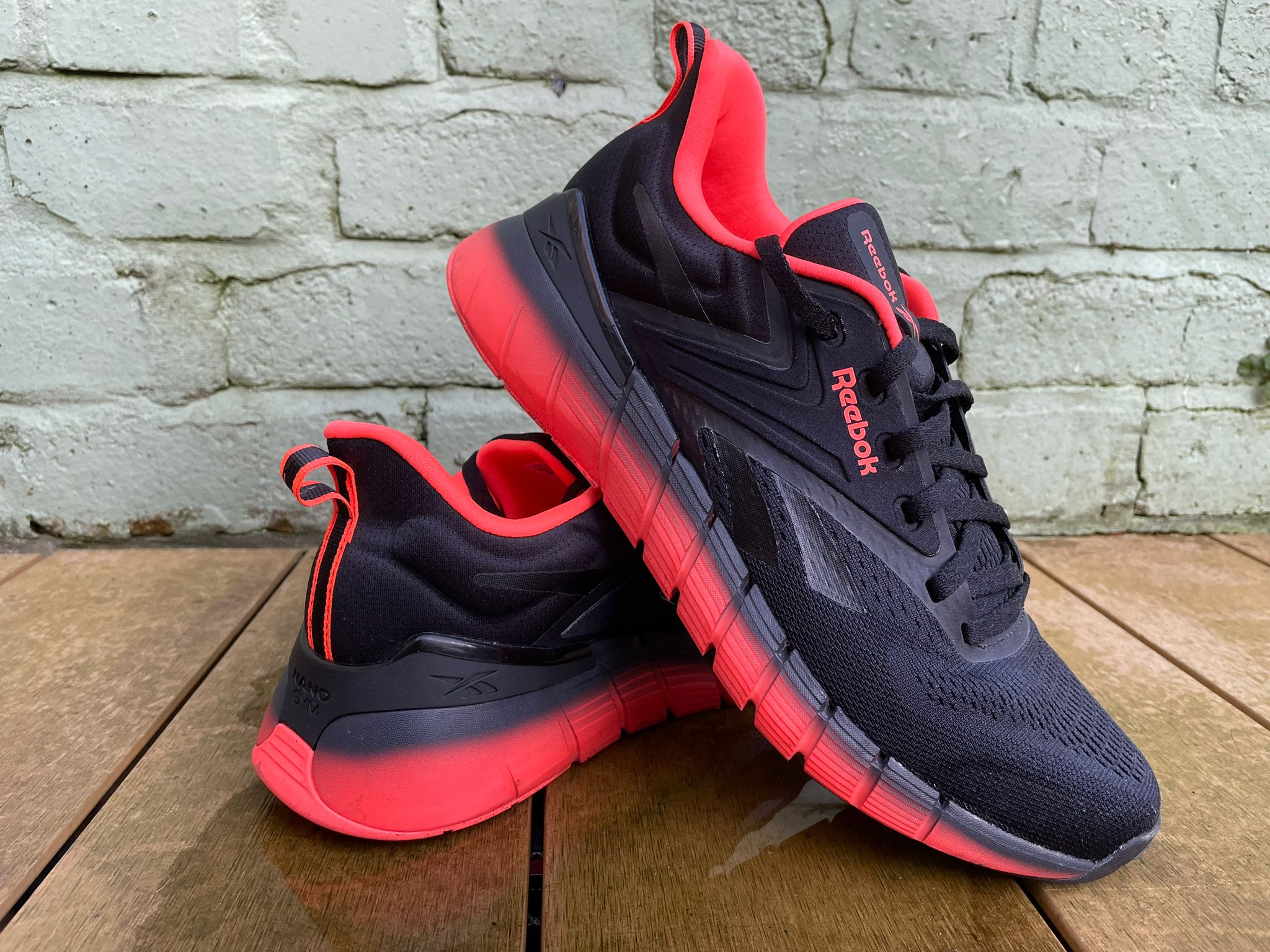
- Best: Budget buy
- Best for: Gym, exercise classes, HIIT
- Fit: Slightly small
- Heel to toe drop : 8mm
- Why we love it
- More affordable
- A good all-rounder
- Very comfortable
- Take note
- Not one for specialists
In recent years, Reebok’s nanoflex line has acted as the more affordable alternative to its signature nano training shoe. But in 2024, the brand unofficially replaced it with the nano gym, and I was impressed by the significant improvements on show.
The nanoflex was a decent all-rounder, good-not-great across the board with a less than premium feel to the materials used – I experienced an irk-worthy amount of pressure on the tops of my big toes when wearing it.
The nano gym feels far more loved, and I found it incredibly comfortable from the first wear; the soft mesh upper is accommodating and the heel offers a locked-in fit. Its springy, flexible foam midsole felt fantastic for running and jumping too, while a TPU cradle around the rear of the shoe provides a decent level of stability when lifting.
By the size of the foam stack under the heel, you could probably guess that this shoe isn’t the best for lifting. I was actually impressed by the support on offer given the thickness of the midsole, but it couldn’t match the likes of the mainline nano, TYR cxt-2 and Strike MVMNT haze trainer for stability.
However, it does cost significantly less than these options, with an RRP of £100 which is already subject to frequent and significant discounts.
As a result, I still think it’s a fantastic pick for gym newcomers, or those wanting a multifaceted training shoe for under 100 quid.
The verdict:
The best all-round gym trainer is the R.A.D One. This barnstorming shoe is brilliant for CrossFit WODs and HIIT workouts, while also proving to be well-equipped for lifting weights and even wearing around town, thanks to its stylish design. The TYR cxt-2 comes in a close second. Though it takes a bit of breaking in, the comfort comes after a few wears, and it boasts better stability than my winning pick if your training has a weightlifting bias.
If you love a heavy leg day or Olympic weightlifting, you’ll find the Inov8 f-lite max hard to beat, and if you just want a comfortable, versatile do-all shoe, I’d point you in the direction of the unsung Under Armour dynamic intelliknit training shoe. If none of these shoes quite float your boat, I’d recommend browsing the features that each of the options above offer in order to find one better suited to your needs.
Is it worth paying more for a gym trainer?
I’m a fitness writer and coach who has been reviewing the best gym shoes for several years now, so perhaps I’m a bit biased here, but I absolutely believe it’s worth paying for a puprose-built gym trainer.
The best shoe for you will depend on your needs. If you love Olympic weightlifting, a dedicated weightlifting shoe will be warranted, while runners or Hyrox fans will want something with a bit more cushioning to see them safely through mile after mile.
But not all of us have the money for multiple pairs of trainers, so most people will be best-served by a hybrid approach – a shoe which balances a responsive ride with a stable sole to help you run, jump and lift in comfort. Find out how to find one below.
How do I find good gym trainers?
I wince whenever I see someone squatting in running shoes, or setting off for a run in a set of Chuck Taylors – neither shoe is equipped for the role it’s been given. A running shoe’s soft sole will squish and shake under heavy loads, providing wobbly foundations upon which to build a strong lift, while a pair of Converses won’t have any extra support to soften the impact of each stride durign a run.
The beauty of a good gym shoe is its versatility; it should be able to support you through a varied exercise routine in comfort. That’s why I look for a shoe that can find that Goldilocks balance between being springy for high-impact exercises and stable for lifting weights.
This usually means a heel to toe drop of no more than 9mm, and a midsole with a slim yet springy layer of foam. I also look for a heel that’s engineered for added stability, and a firm feel under the rear of the foot to help me generate power during weighted leg exercises like squats.
It’s worth caveating that, to date, I’m yet to find a shoe that is both great for lifting heavy and running long distances – the qualities needed for each activity (the presence or lack of cushioning) contradict each other. The closest I’ve come is the Inov8 f-fly. So, for maximum versatility, I would recommend looking for a shoe that feels stable for weighted squats, and can support you through short runs of 1-3km.
Voucher codes
For the latest discounts codes on trainers and other sports offers, try the links below:
Dressing from the ground up? Once you’ve picked a pair of gym trainers, why not take a look at our guide to the best gym shorts for men?

